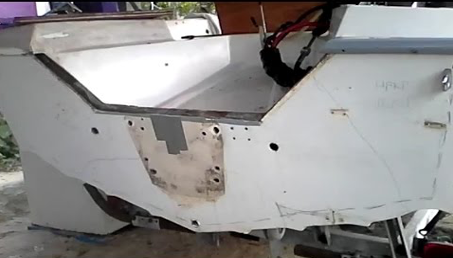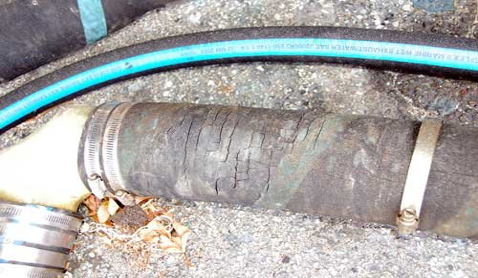Spring Preparation Checklist
With more waterways opening up, boatowners are eager to get out on the water and practice social distancing with their families. The best way to ensure that those hours are spent happily is to perform proper pre-season preparation. From engines to electrical equipment to plumbing and even cleaning, make a checklist so no steps are missed.
All Equipment
Check everything that could have deteriorated during winter. This is the most broad-ranging instruction because it includes everything from wiring connections, dock lines, anchor rodes, lifejackets, plumbing fixtures that could have been subject to freezing. Rodents love to build nests in tucked-away areas, so get down into those dark corners and lift up hinged seats and check the undersides.
If the boat was under cover, check for deck leaks, particularly around wooden areas. Run water from a hose over possible problem areas.
Check for freeze damage where water may have entered confined areas. Examples are around gel coat cracks, the rudder shaft seal, prop shaft seal, and thru-hull fittings. Examine cored transoms on outboard boats for cracks that could have allowed water entry.
Replace fire extinguishers if needed. Invert hand-held models, tap hard on the bottom with the palm of your hand, and shake. Do automatic extinguishers need servicing?
Replace flares if they show any sign of damage or are outdated.
Mechanical Gear
Move the rudder. If it turns with undue resistance or if there is too much play, find the cause and fix it. Check steering and control systems (cables, control box, linkages, hydraulic systems). Replace swollen, stiff, or rusty control cables.
Replace deteriorated sacrificial anodes.Clean contacts of wires attached inside the hull to anode bolts. If the wire is corroded at the terminal, replace with tinned boat wire.
Check engine oil levels, particularly if the boat is kept in the water. High levels can indicate water intrusion that requires immediate work to save the engine. Check oil reservoirs including tilt/trim on outboards, windlasses, and hydraulic fluid in steering systems.
For sterndrives, carefully check the bellows for any deterioration, especially in areas where beavers are prevalent. Bellows seem to be a choice of things to gnaw on for the cute critters.
Check end plates of engine heat exchangers for white or greenish discoloration indicating water seeping past seals. Many manufacturers recommend these seals be replaced every year. Check all other water seals, including around the raw-water pump, freshwater pump (where it mates to the front of the block and weep hole underneath). Look for signs of corrosion, salt, or antifreeze residue.
Inspect all the hoses throughout the boat for cracking or deterioration. Using a wrench or nut driver, not a flat-head screwdriver, tighten all the hose clamps. Clean raw-water strainers for the engine, generator, air conditioning, head, and any others equipment.
Check prop(s) for dings, bent blades, or damage. Consider sending them to a prop shop for refurbishing. On inboards, grab the shaft and try to wiggle it. If there's play, the cutlass bearing needs replacing. Check the hull and all underwater components.
Check thru-hull fittings and hoses before launch, lubricate (per the manufacturer's instruction), and work each.
For waxed twine stuffing boxes for the rudder and prop shaft, replace the twine and tighten. While the seal is disassembled, check the shaft where it's normally concealed by the seal, for crevice corrosion or wear, particularly if the boat sits for long periods without running. Don't over-tighten; a slight drip is OK. Tighten again once the boat has been run, if needed. Inspect "drip-less" shaft seals including the lubricating water hose for free flow of water to the fitting, if you have that type.
Ethanol Threats
Some mechanics recommend leaving the fuel tank full for winter storage. Others say to store it as empty as possible. Either way, in the spring, check for moisture in the fuel tank. Fill it with fresh fuel and replace the water-separating filter. Inspect fuel lines and fittings for signs of leaks such as discoloring around a fitting. Replace any line or fitting looking impaired, per ABYC and USCG standards or better. Secure any loose lines.
Electrical Equipment
Load test the boat’s batteries and check the electrolyte level and specific gravity if applicable. A simple voltage reading with a volt/ohm meter won't tell the whole story, nor will just testing to see if it can turn over the engine. Double check all grounds and tighten terminals with a wrench. Don’t trust wing nuts tightened by hand.
Check and test communications equipment, including EPIRB/PLB batteries, and verify that the registration is current. Verify that your MMSI is correctly entered into your DSC radio.
Depth-finder transducers can be damaged by cold, particularly if water has migrated through cracks in the plastic. Make sure they are sealed before the boat goes back into the water.
Test bilge pumps and alarms. If the float and alarm switches for bilge pump(s) can't be activated manually, install the drain plug and use a hose to fill the bilge enough to see that the pumps and alarms work.
Bilge blowers and hoses should be checked for tears or disconnected fittings.
Test smoke and carbon monoxide alarms and change batteries.
Appliances and Plumbing
Turn on each appliance in galleys and wetbars to make sure everything works and that no fuses or breakers trip. For gas stoves, check fittings, line, and emergency shutoff solenoid valve and solenoid wire connections.
Remove antifreeze in freshwater lines. Check heads, showers, sinks and water heater for cracks, even if they were drained them or had antifreeze added.
Sailboats
Inspect and service winches, furling gear, blocks and cars, all standing rigging before the sails are put on. Then do it all over again with the sails on. Check swage fittings for signs of cracking or other deterioration. Also look at tangs on the mast where stays are attached. Inspect chain plates above and below deck for cracks or other deterioration, and check the structure where plates come through the deck for leakage or deterioration. Look for broken strands in stainless cable. Remove any tape covering turnbuckles or other areas, inspect underneath and replace tape if needed after servicing. If you have a bolted-on keel, check for seepage or signs of rust or other deterioration.
After Launch
It’s spring and someone always forgets, so we’ll say it. Remember the drain plug. When the boat is launched, check bilges, thru-hull fittings, below-water hoses, and any other relevant areas for seepage.
Run the engine(s) at the dock at idle, or slow for at least 15 minutes, and then away from the dock, at varying speeds, but within easy towing distance. Now enjoy the water.






